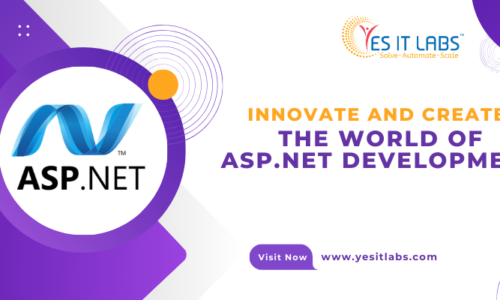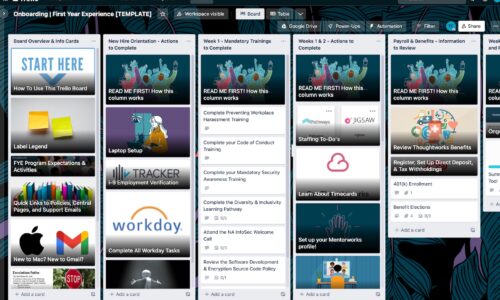
Six Key Principles for Developing Modern Web Applications in 2024
- softscribble@gmail.com
- June 3, 2024
- Software development
- 0 Comments
In the ever-evolving landscape of web development, staying ahead of the curve is essential for any web development company. The principles guiding web application development have shifted significantly over the years, and 2024 is no different. Whether you are a seasoned developer or part of a web app development company, understanding these principles will help you create more robust, user-friendly, and future-proof applications.
1. User-Centric Design
At the heart of any successful web application lies the user. User-centric design isn’t just about making things look pretty; it’s about creating an intuitive, seamless experience that keeps users engaged and coming back. In 2024, this principle continues to dominate.
Key Aspects of User-Centric Design
- Responsive Design: Ensure your application works well on all devices, from desktops to mobile phones.
- Accessibility: Make your application accessible to users with disabilities by adhering to WCAG guidelines.
- Intuitive Navigation: Design clear, straightforward navigation to help users find what they need quickly.
- Performance Optimization: Fast loading times are crucial. Optimize your application to reduce latency and improve user experience.
A web development company that prioritizes user-centric design will naturally create more engaging and effective applications.
2. Progressive Web Apps (PWAs)
Progressive Web Apps have been a game-changer, bridging the gap between web and native applications. They offer the best of both worlds by combining the reach of the web with the functionality of native apps.
Advantages of PWAs
- Offline Functionality: Progressive Web Apps (PWAs) can operate offline or on unreliable networks.
- App-like Experience: They provide a native app-like experience with push notifications, background sync, and more.
- Ease of Deployment: PWAs can be updated and maintained more easily than native apps.
- Cost-Effective: Creating a Progressive Web App (PWA) is typically more economical than developing distinct native apps for various platforms.
For a web app development company, incorporating PWAs into their offerings can lead to more versatile and user-friendly products.
3. Microservices Architecture
Microservices architecture is a modern approach that structures an application as a collection of loosely coupled services. Each service is independently deployable and scalable, which enhances the flexibility and resilience of the application.
Benefits of Microservices
- Scalability: Scale each service independently to handle load efficiently.
- Resilience: Failure in one service doesn’t necessarily affect the entire application.
- Flexibility: Teams can develop, deploy, and scale services independently, facilitating faster development cycles.
Adopting a microservices architecture allows a web development company to build more scalable and maintainable applications, which is crucial for handling growing user demands and complex functionalities.
4. Security by Design
With the increasing frequency and sophistication of cyber threats, security can no longer be an afterthought. Security by design means integrating security practices throughout the development lifecycle, from inception to deployment.
Security Practices
- Data Encryption: Secure sensitive data by encrypting it both at rest and during transit.
- Authentication and Authorization: Implement robust authentication mechanisms (e.g., multi-factor authentication) and granular authorization controls.
- Regular Security Audits: Perform frequent security audits and vulnerability assessments.
- Secure Coding Practices: Train developers on secure coding practices to prevent common vulnerabilities like SQL injection and cross-site scripting (XSS).
A web app development company that prioritizes security by design will build trust with users and protect against potential breaches.
5. Cloud-Native Development
Cloud-native development leverages the full potential of cloud computing, offering scalability, flexibility, and resilience. It involves building applications specifically designed to run in cloud environments.
Cloud-Native Principles
- Containerization: Use containers (e.g., Docker) to package applications, ensuring consistency across environments.
- Orchestration: Utilize orchestration tools (e.g., Kubernetes) to manage, deploy, and scale containerized applications.
- Serverless Computing: Adopt serverless architectures (e.g., AWS Lambda) to reduce operational overhead and scale automatically.
- DevOps Integration: Integrate DevOps practices to automate deployment, monitoring, and scaling processes.
For a web development company, embracing cloud-native development can lead to more scalable and efficient applications, capable of handling dynamic workloads.
6. Continuous Integration and Continuous Deployment (CI/CD)
CI/CD practices are essential for modern web application development, enabling rapid and reliable delivery of software updates. CI/CD automates the integration and deployment processes, ensuring that code changes are automatically tested and deployed to production environments.
Benefits of CI/CD
- Faster Release Cycles: Speed up the development process by automating testing and deployment.
- Improved Quality: Automated testing catches bugs early in the development cycle.
- Reduced Risk: Small, incremental updates reduce the risk of major issues in production.
- Feedback Loop: Faster feedback allows developers to address issues and improve features quickly.
A web app development company that implements CI/CD can ensure a smoother, more efficient development process, leading to higher quality applications and quicker time-to-market.
Conclusion
In 2024, the principles guiding web application development continue to evolve, driven by advancements in technology and changing user expectations. By focusing on user-centric design, embracing Progressive Web Apps, adopting microservices architecture, prioritizing security, leveraging cloud-native development, and implementing CI/CD practices, any web development company can stay ahead of the curve.
These principles not only improve the functionality and performance of web applications but also enhance user satisfaction and trust. As the digital landscape continues to shift, staying informed and adaptable will be key to success in the competitive world of web app development. Whether you’re developing the next big web app or refining an existing one, these principles will help you create modern, efficient, and user-friendly applications that stand the test of time.
Tags: best web application development company in the usa, web app development company usa, web application development company usa, web application development usa, website application development company, website development company, website development company in usa, website development service usa, website development services
Contact Softscribble for your software Requirement
Contact Now






